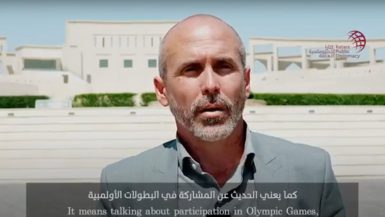
UN World Tourism Organization ranks Turkey as Europe’s 4th largest and world’s 6th in its global index. It is easily the Muslim world’s tourism capital by a distance even though its unique geographical location means the country is also strategically, a part of Europe.
Some 45 million plus tourists visited the country in 2018 and the number of foreigners shot up over 16 percent year-on-year in July this year. These are staggering numbers and reinforce the country’s stature as a global tourism magnet.
The country’s tourism revenues alone jumped 13.2 percent from a year earlier to $7.97 billion in the second quarter of 2019, of which 87.8 percent of the income came from foreign visitors, while 12.2 percent accrued from citizens who are residents abroad.
The surge, in some way, is symbolised by the might of the $12 billion Istanbul New Airport — the world’s largest — inaugurated last year. Spread over 76 million sq mt — a plot of land bigger than New York’s Manhattan Island — it boasts a 53,000 sq mt duty free complex, a 42km baggage handling system and 22,000-camera surveillance system, manned by 225,000 employees. When completed in 2025, it would be handling 200 million passengers annually — 93 million more than Hartsfield-Jackson International Airport in Atlanta, the current numero uno!
This space will assuredly do nothing to draw the full visage and splendor of Turkish culture unique as it is in having influenced and having been influenced by cultures from China to Austria and from Russia to North Africa for more than a thousand years. The range of cultural diversity and richness is simply unparalleled and one to behold for the ages.
So if there’s one city that can perhaps, reasonably encapsulate the culture, past and present, in all its manifest glory, it has to be Istanbul — once the capital of the Roman, Byzantine and Ottoman empires. Alphonse de Lamartine, the French poet-politician, famously reflected on the merits of Istanbul back in the 19th century thus, “If one had but a single glance to give the world, one should gaze on Istanbul.”
Most of the historic sites of the city, which is uniquely part European and part Asian, lie across the Golden Horn in Sultanahmet and district Fatih (erstwhile Constantinople). You can be forgiven to think you’re in a maze with the Grand Bazaar here, made up of 64 streets with 22 separate entrances! A UNESCO world heritage site, Sultanahmet hosts the famous Hagia Sophia and The Blue Mosque.
But it is the bohemian Beyoğlu in the cityscape that offers the modern cultural identity of Turkey with its art galleries, cafes, bars, music shops and an unmissable arty vibe. Home to Turkish Nobel laureate Orhan Pamuk, it opens vistas into the world of art and culture. Sahaflar Carsisi, the old books bazaar, The Museum of Innocence and an array of restaurants offering the A to Z of signature Turkish cuisine are some of the highlights.
Talking of music, there’s a long history that dates back centuries and it will be well-nigh impossible to run the course here with a semblance of justice. But from the religious, classical, folk, pop, military, Western and instrumental, it’s a vast palette. Then, there’s full spectrum of dances, which connect at so many levels that it turns into a wonder. The Whirling Dervish is just one, if outstanding, symbolization of a rich culture.
Folk dances in Turkey are multiple and each distinct in their own right, reflecting the cultural landscape of the particular region; for instances, the bar in Erzurum province, the halay in the East and Southeast, the hora in Thrace, the horon in the Black Sea and spoon dances in and around Konya.
Last but not least, you can’t leave without the traditional Turkish bath, where you can get bathed, washed and cleaned by an attendant in 11th century old structures (hammams) and come out reinvigorated like never before!




